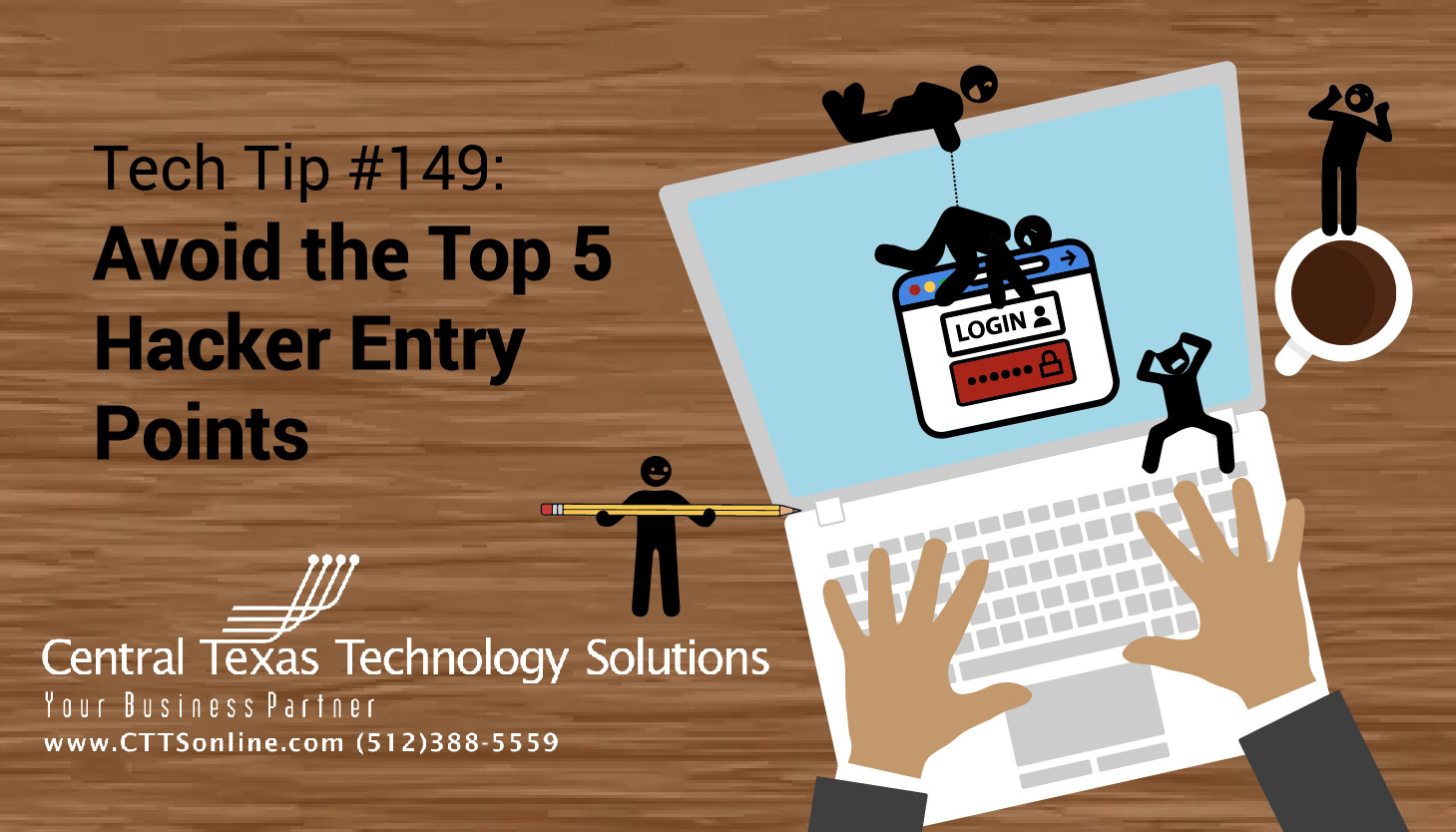 If you take a look around your office, you should see numerous points of entry. Doors and windows, of course, but while you may have these areas secured, that’s not the only way criminals can steal from or damage your business.
If you take a look around your office, you should see numerous points of entry. Doors and windows, of course, but while you may have these areas secured, that’s not the only way criminals can steal from or damage your business.
Since the number of cyberattacks has continued to rise steadily during the last few years, we should note that the types of cyberattacks are almost as numerous as the number of hackers. From personally identifiable information, or PII, to other pieces of confidential data, the field of information is vast and the consequences of a data breach can be numerous. From impersonation to fraudulent use of banking data, to blackmail, ransom demand, and more. While these can often be devastating to your business, they can, in most cases, be avoided.
To stop cybercriminals from getting a hold of your business data, you'll need to take a diligent and proactive stance. Here are the top 5 hacker entry points to keep on your radar:
1. Computer and Servers
Businesses from small, midsize to large corporates, rely almost entirely on computers to contain and manage their important information. This includes confidential employee and Client information. PII like Social Security numbers to Credit card information and whatever else you might have on them.
- How do I protect my computers and servers?
If you don't have a Managed Service Provider (MSP) like CTTS, you'll want someone to come in and do a network scan right away to see how safe your computers are and how locked down your network is.
2. Employee Mobile Devices
Due to the wide acceptance of Bring Your Own Device (BYOD) policies in the workplace, a blind eye has been turned to the impact of mobile devices and the inherent risk of cyberattack anytime a smartphone or tablet connects to the open internet.
- How do I protect my employee mobile devices?
A mobile device policy must be put in place and followed. This policy should include preventative steps like enforcing security codes, adding Remote Access Management (RMA), a Virtual Private Network (VPN) protection, and domain name management like domain privacy, SSL certificates, and DNS services.
3. Unsecured Wi-Fi Network
If you think your business is a low risk of a cyberattack because it is small or huge, old or new, think again. Not having a secured network or even having a guest Wi-Fi that is not separate from the main network can cause huge problems, no matter the state of your company.
- How do I secure my business network?
To protect the usability and integrity of your network and data, including software and hardware, you'll want to set up multiple layers of defense, each layer implementing different policies and controls depending on the user and business needs. CTTS can create a subnet connection on your network so it keeps your networks separate and secure. We can also deploy a monitoring service that keeps an eye on your network 24/7 and will alert you the moment an issue arises.
4. Email
The number one way hackers gain access to company data is through the employee. We all get a lot of emails every day and maybe some days we don’t always sift through the email with a fine comb. This vulnerability can completely ruin an entire business. Just one click on a phishing email can give cybercriminals access to your sensitive company data and Client information.
- How can I protect my company email?
If you're ever not sure about the validity of an email you have received, sometimes the easiest answer is to pick up the phone and call the person to make sure it was them that sent the email instead of clicking anything. To prevent further infringement upon your information, you will need a good email system, exceptional spam protection, and a security awareness training program.
5. Website
You've worked hard to build your website and your brand, securing your site and learning how to protect against hackers is a big part of keeping your business healthy and safe in the long run. Unfortunately, you'll need more than just a firewall to protect your website. Hackers will target a website, no matter the size of your business, targeting loopholes, exposing your database and system.
- How can I protect my company website?
Safeguarding your presence on the Internet requires ongoing vigilance. You'll need to continually keep your software updated to stay up to date with the latest hacking threats. In addition, you'll need to install security applications, install a web application firewall, and tighten your network security. On top of all that, you'll want backups of your entire site, just in case! Better to be safe than sorry.
It can be challenging and costly to maintain your business’ technology security systems, but it doesn’t necessarily have to be. This is where CTTS comes in; our expertise in data backup, recovery, business continuity, and cybersecurity can help your business achieve all of its technology-related goals, including regular network maintenance. You might be surprised by how many benefits proactive network maintenance can provide for your organization. Give us a call today for a free business technology assessment: (512) 388-5559.

By Ramon Kreher
Desktop Support Technician
Central Texas Technology Solutions
